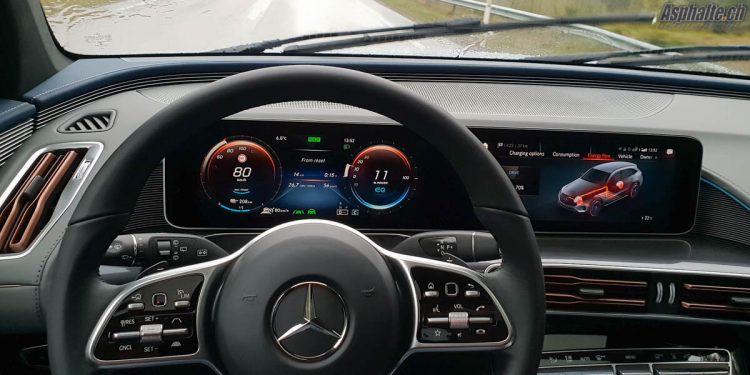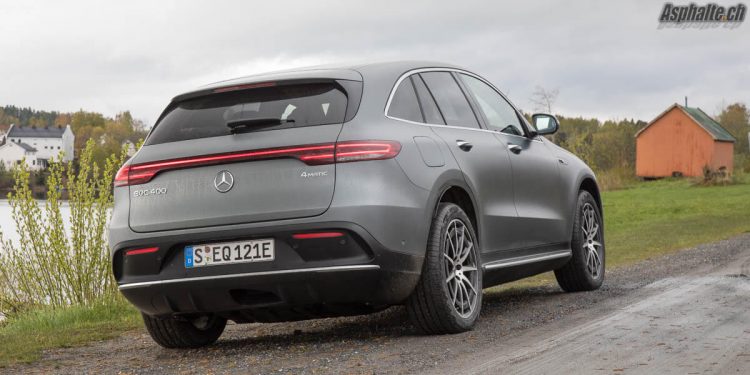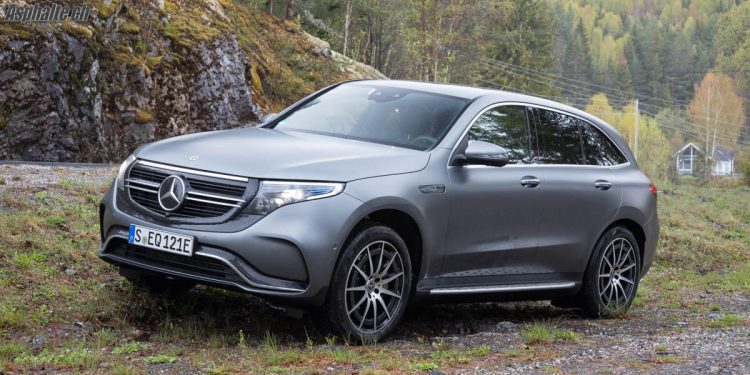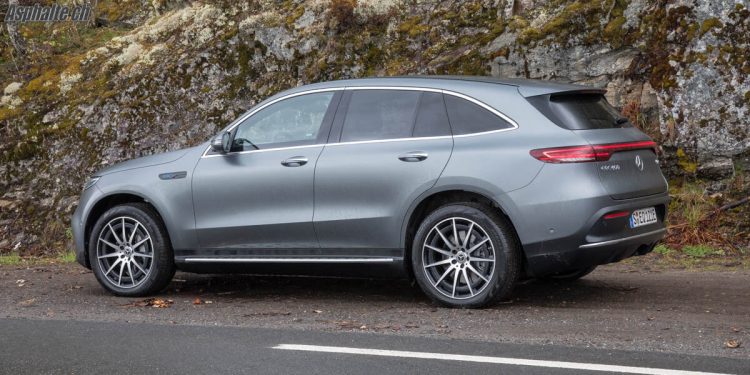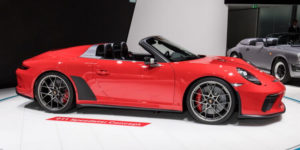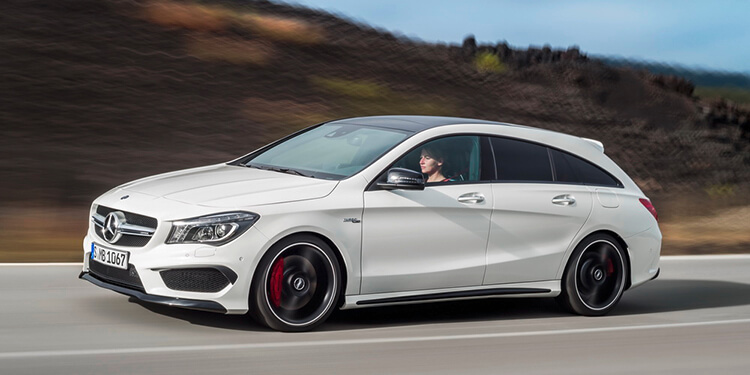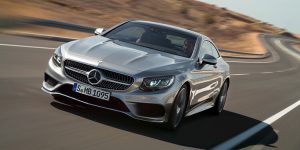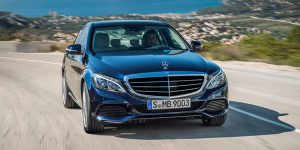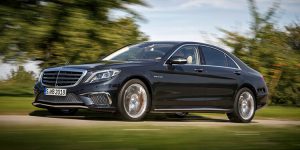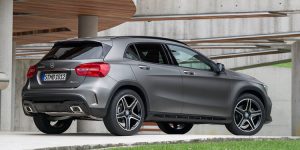Road Test Mercedes EQC 400 4 Matic: opening salvo
On norwegian roads (our article on Norway’s EV incentives), the EQC delivers a comfortable and quiet driving experience, where it not for the tire roar amplified by tarmac roughness. The suspension has a fixed setting, with conventional steel springs and shock absorbers at the front, and a simple pneumatic self-levelling system at the rear to maintain ground clearance constant.
Our test loops and the rather draconian norwegian speed limits have not allowed us to explore much of the EQC handling in turns, but the EQC appears to behave in similar ways to its competitors. Mass (2420 kg DIN, 175kg more than the Jaguar i-Pace !) is significant but the low center of gravity results in surprising agility.
Mercedes proposes 5 regeneration modes: D+, D, D-, D- -, et D-Auto. They are selectable through the steering paddles and range from free coasting to hefty deceleration (D–) where single pedal driving is nearly possible. D-Auto regulates regeneration constantly depending on multiple parameters such as speed, topography and distance to the preceding vehicle. I defaulted to the D- – for its predictability.
Maximum regeneration power is 180 kW. Mode D- -, specified at 2.5 m/s2, reaches 70% of this value. Action on the brake pedal splits the braking power between the electric system and the steel brakes.

